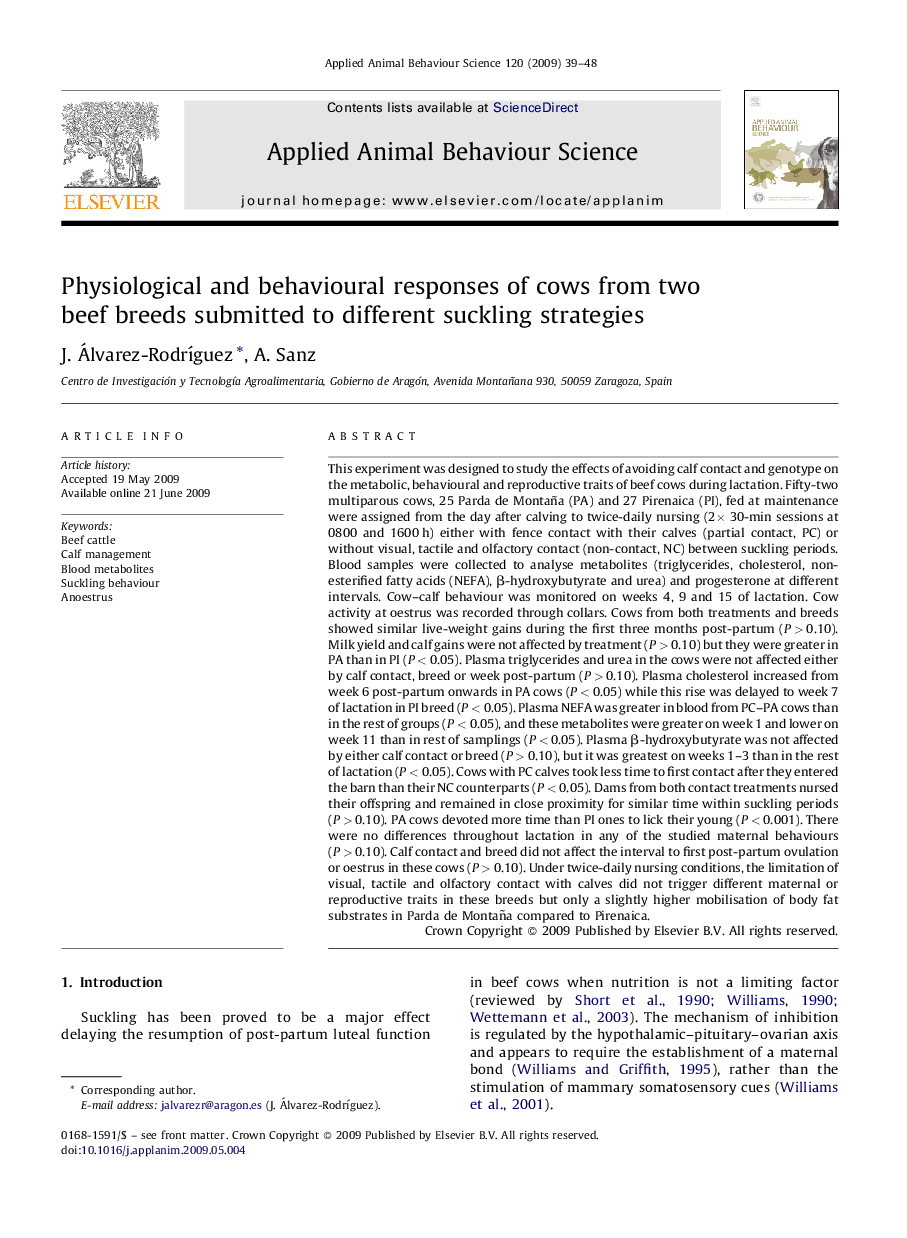| کد مقاله | کد نشریه | سال انتشار | مقاله انگلیسی | نسخه تمام متن |
|---|---|---|---|---|
| 4523534 | 1625407 | 2009 | 10 صفحه PDF | دانلود رایگان |

This experiment was designed to study the effects of avoiding calf contact and genotype on the metabolic, behavioural and reproductive traits of beef cows during lactation. Fifty-two multiparous cows, 25 Parda de Montaña (PA) and 27 Pirenaica (PI), fed at maintenance were assigned from the day after calving to twice-daily nursing (2× 30-min sessions at 0800 and 1600 h) either with fence contact with their calves (partial contact, PC) or without visual, tactile and olfactory contact (non-contact, NC) between suckling periods. Blood samples were collected to analyse metabolites (triglycerides, cholesterol, non-esterified fatty acids (NEFA), β-hydroxybutyrate and urea) and progesterone at different intervals. Cow–calf behaviour was monitored on weeks 4, 9 and 15 of lactation. Cow activity at oestrus was recorded through collars. Cows from both treatments and breeds showed similar live-weight gains during the first three months post-partum (P > 0.10). Milk yield and calf gains were not affected by treatment (P > 0.10) but they were greater in PA than in PI (P < 0.05). Plasma triglycerides and urea in the cows were not affected either by calf contact, breed or week post-partum (P > 0.10). Plasma cholesterol increased from week 6 post-partum onwards in PA cows (P < 0.05) while this rise was delayed to week 7 of lactation in PI breed (P < 0.05). Plasma NEFA was greater in blood from PC–PA cows than in the rest of groups (P < 0.05), and these metabolites were greater on week 1 and lower on week 11 than in rest of samplings (P < 0.05). Plasma β-hydroxybutyrate was not affected by either calf contact or breed (P > 0.10), but it was greatest on weeks 1–3 than in the rest of lactation (P < 0.05). Cows with PC calves took less time to first contact after they entered the barn than their NC counterparts (P < 0.05). Dams from both contact treatments nursed their offspring and remained in close proximity for similar time within suckling periods (P > 0.10). PA cows devoted more time than PI ones to lick their young (P < 0.001). There were no differences throughout lactation in any of the studied maternal behaviours (P > 0.10). Calf contact and breed did not affect the interval to first post-partum ovulation or oestrus in these cows (P > 0.10). Under twice-daily nursing conditions, the limitation of visual, tactile and olfactory contact with calves did not trigger different maternal or reproductive traits in these breeds but only a slightly higher mobilisation of body fat substrates in Parda de Montaña compared to Pirenaica.
Journal: Applied Animal Behaviour Science - Volume 120, Issues 1–2, August 2009, Pages 39–48